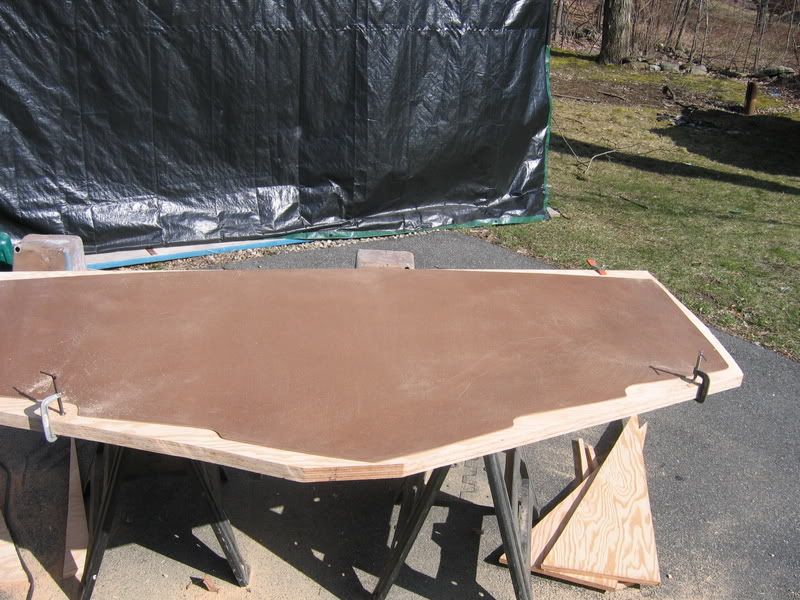I used marine fir plywood for my transom,and have no regrets.I used two 4x8 sheets of marine fir glued together with thickened epoxy resin.No way it will ever come apart.
By the way,as for thickness,my transom now measures 2-3/16" thick including the core,and inner and outer glass skins.(it's an I/O).
The original was much thinner,around 1-3/4".I laid up two layers of 1708 on the inner side of the outside transom skin,before i put in the core.
If you use high quality materials,resins, plywood,etc,and do it properly with good craftsmanship it should outlast you,or at least until your too old to ride in a boat.
Ok,
now all of you can throw rotten tomatoes,and tin cans at me,because,may I dare say that I used,oh my god,Polyester Resin.
I know,I know, epoxy is a stronger resin,and does make a stronger secondary bond,but in every glass boat that I've owned(10)it was never the resin system that failed.
It was usually poor workmanship,like resin starved glass,or uncoated wood,no drain or limber holes,and just plain sloppiness,and that included a couple high end brands.
I work for a friend in the glass and resin business,and could have bought epoxy from him at a very good price,but i decided to stay with a high grade polyester.Yes it smells,and it may be not as strong as epoxy in a secondary bond,but it wets out material better,and for me it is just easier,as I am very comfortable working with it.
Whichever one you use,make sure you use a high quality resin.be wary of some of the cheap stuff no matter if it's epoxy or polyester.
Remember quality is remembered long after cost is forgotten.
Here's a couple pictures of the transom glued together,and a piece showing the glue joint.

